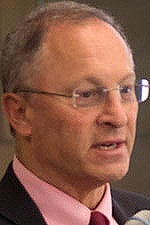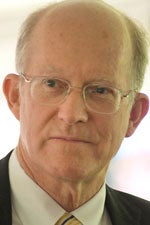UC Davis’ senior leadership has communicated to deans and vice chancellors the 2017-18 budget framework, which includes a multi-year plan to “bring any deficits in the central operating budget within fully manageable proportions and thus restore the university to fiscal health.”

In a letter outlining the framework, Interim Chancellor Ralph J. Hexter and Interim Provost and Executive Vice Chancellor Ken Burtis acknowledged: “It is never pleasant to undertake this work of rebalancing.
“We can take some comfort in knowing that we are taking responsibility for the long-term sustainability of UC Davis.”
And while the rebalancing effort calls for a base budget reduction of 2 percent across most units, Hexter and Burtis made clear that UC Davis will continue to invest in critical programs and allocate incremental fixed costs. These include:
- Fixed costs for faculty and staff (including a 3 percent merit pool as authorized by the UC Office of the President).
- Fixed costs for teaching assistant fee remission.
- Hiring Incentive Program (HIP), for faculty positions approved in 2014 and 2016.
- Continued support for faculty diversity by the Center for the Advancement of Multicultural Perspectives on Science (CAMPOS) Faculty Scholars program and the new Impact Recruitment Incentive (IRI), for nonscience disciplines.
- Faculty start-up allocations totaling at least $10 million.
- Deferred maintenance program of $100 million over five to six years.
- Classroom renovation and technology upgrade program ($20 million over four to five years), and instructional equipment funds.
In a multipronged strategy, the university plans to cut its $22 million debt in half by recapturing one-time funds, and trim its structural deficit to about $8 million — which officials say is sustainable going forward and something the university should be able to grow out of.
State budget cuts after the 2008 recession started UC Davis on a path to a structural deficit ($29 million the last two years) as the central campus absorbed not only the post-recession cuts but also rising costs — with no extra state support — for salaries and benefits

“This was, in other words, a strategy to mitigate the impact of those budget cuts and the increase in fixed costs that otherwise would have impacted all units across the entire university,” Hexter and Burtis said. And while the state has been restoring the cuts it made a decade ago, the UC system had to commit to a six-year tuition freeze in return for the funding.
So where does that leave us? The structural deficit persists and UC Davis has no more reserves to cover it. The tuition freeze has ended, but the increase that takes effect in 2017-18 is modest, and future increases are likely to also be modest. And the university’s fixed costs keep on rising, outstripping revenue increases.
Therefore, Hexter and Burtis concluded, “It is only prudent to undertake moderate rebalancing at this time, lest by waiting we force the university to have to take more drastic reductions at some point in the future.”